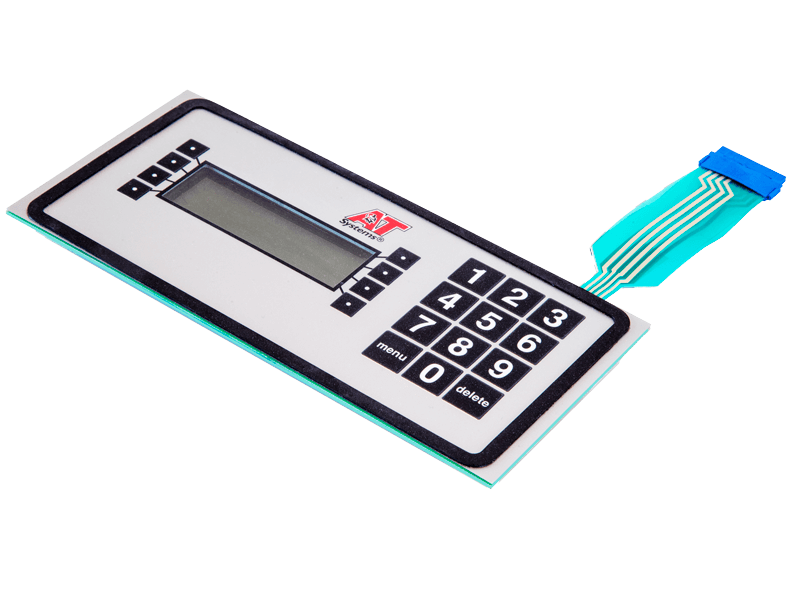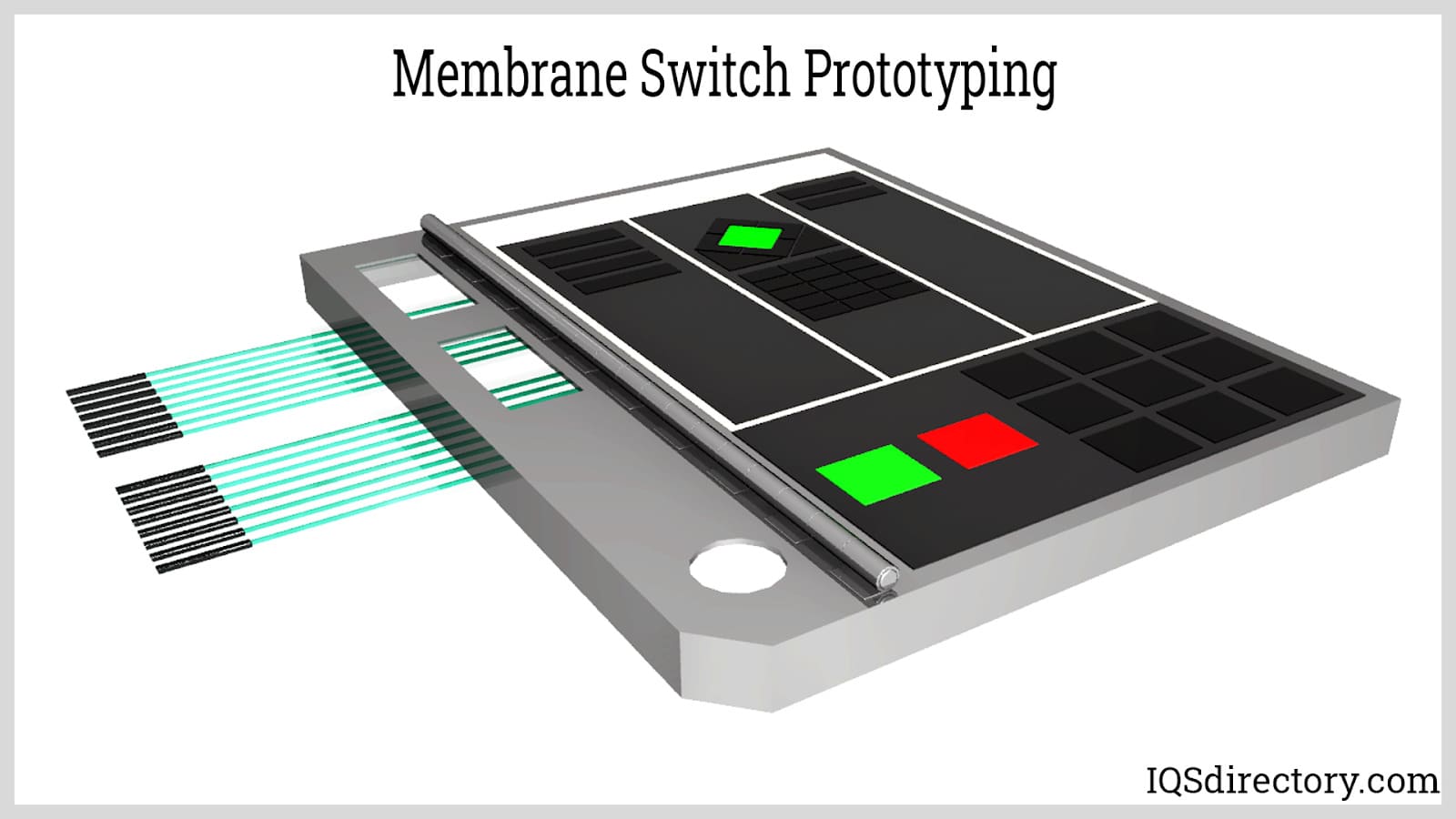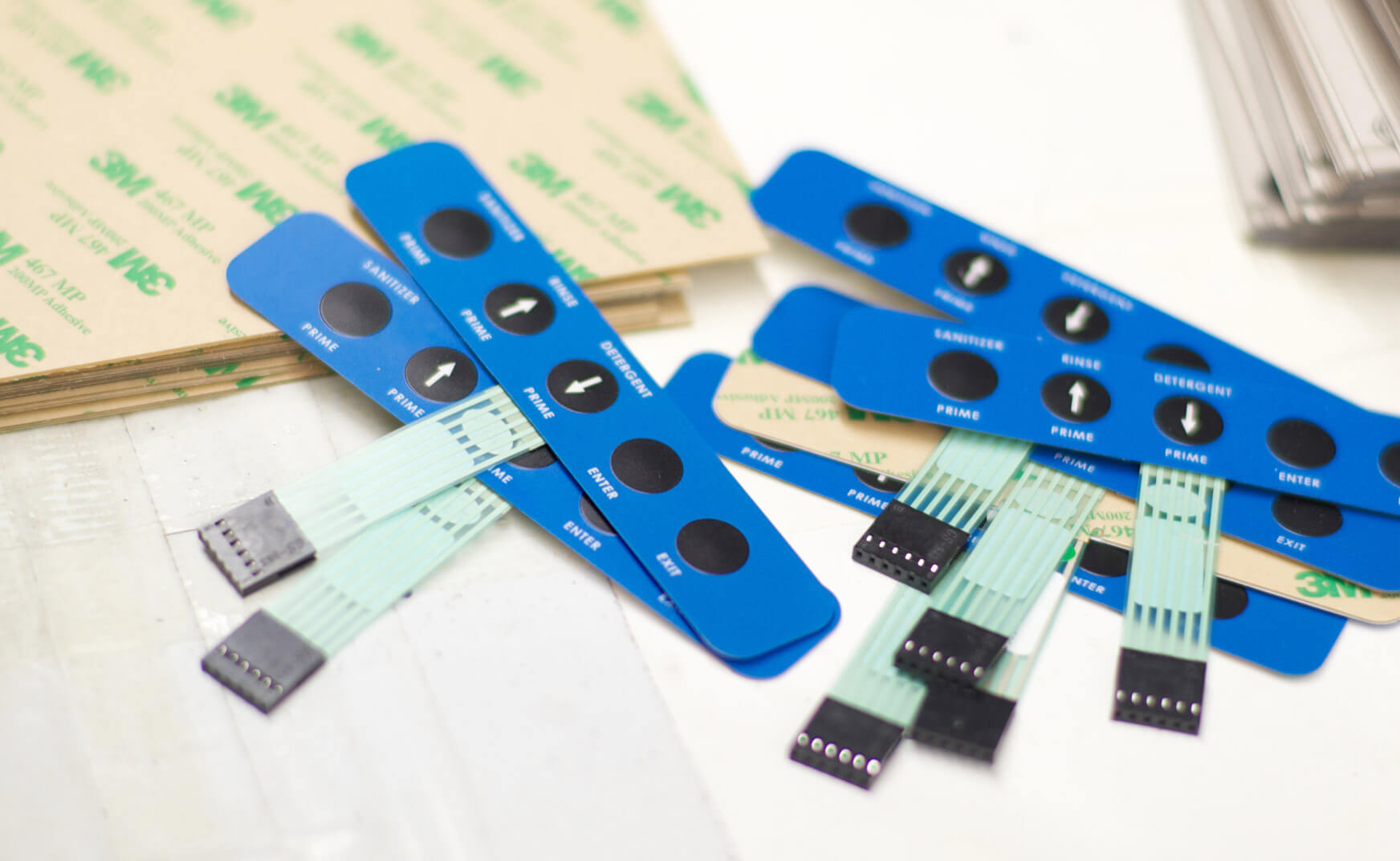Ensuring Quality and Longevity with Membrane Switches in Electronics
Ensuring Quality and Longevity with Membrane Switches in Electronics
Blog Article
Recognizing the Importance of Membrane Switches in User Interfaces
Membrane switches are essential elements in the layout of reliable interface, helping with not just performance yet also boosting aesthetic appeal and user interaction. Their one-of-a-kind functions, such as resistance to ecological aspects and customizable styles, make them suitable for a diverse range of applications across multiple markets. As we discover the different advantages and future fads connected with Membrane innovation, it ends up being clear that these switches are extra than simply elements; they stand for a convergence of development and practicality. The implications of this technology on individual experience deserve taking a look at even more.
What Are Membrane Switches?

The spacer layer, which contains sticky homes, enables the splitting up of the circuit layer from the overlay, ensuring that the button stays in a non-activated state until pushed. When stress is put on the overlay, it compresses the spacer layer, linking the void and finishing the circuit in the underlying layer. This style not just lowers the physical space required for typical mechanical switches yet likewise improves the toughness of the tool, as Membrane buttons are usually resistant to dirt, dampness, and various other environmental aspects.
Commonly located in applications varying from customer electronic devices to medical tools, Membrane buttons are indispensable to modern-day technology, supplying a easy to use and effective user interface that straightens with contemporary layout requirements.
Advantages of Membrane Switches
While various switch technologies exist, Membrane Switches deal unique advantages that make them specifically desirable in various applications. One of the main benefits of Membrane switches is their portable layout, which enables space-saving executions in devices where realty is limited. Their thin account not only improves aesthetic allure but likewise promotes light-weight building.
An additional significant benefit is their resistance to environmental factors. Membrane switches are typically sealed versus moisture, dust, and pollutants, making them ideal for usage in demanding environments, such as medical gadgets and commercial tools. This sturdiness prolongs the life expectancy of the button, decreasing upkeep expenses and improving dependability.
In addition, Membrane buttons can be tailored to satisfy specific layout requirements, incorporating one-of-a-kind graphics and shades that boost individual communication. Their responsive comments options can also be tailored to supply an enjoyable user experience. Additionally, Membrane buttons are economical, especially in high-volume applications, as they can be created efficiently.
Applications in Different Industries

In the customer electronics field, Membrane buttons are common in gadgets such as microwaves, cleaning equipments, and remotes. Their responsive feedback and visual alternatives improve individual experience while supplying a smooth, modern look. In addition, automobile producers utilize Membrane switches in dashboard controls and infotainment systems, where space is limited, and user involvement is vital.
Moreover, the commercial field leverages Membrane buttons in control panels for machinery and devices, allowing for user-friendly operation in typically extreme environments. Their resistance to chemicals and moisture guarantees longevity and integrity in these applications. Generally, the versatility of Membrane Switches contributes considerably from this source to their widespread use, making them important in different technical domains.
Design Factors To Consider for Membrane Buttons

When creating Membrane switches, a number of crucial factors to consider have to be taken right go to my site into account to guarantee ideal performance and user experience. To start with, the option of products is critical; selecting sturdy, high-quality substratums can enhance the switch's longevity and resistance to ecological variables such as wetness and temperature variations.
Second of all, the style of the visuals overlay should focus on clarity and ease of usage. Icons and text have to be readable, and the format needs to help with user-friendly communication (membrane switches). In addition, tactile feedback is important; including a responsive dome or various other devices can enhance the individual experience by giving physical confirmation of activation
An additional important variable is the button's electric performance. Designers need to make certain that the conductive traces are effectively created to lessen resistance and prevent signal interference. This includes assessing the called for actuation pressure and guaranteeing compatibility with the electronic components they will interface with.

Future Trends in Membrane Innovation
As technology proceeds to advance, Membrane switches are poised to advance significantly, driven by developments in materials and producing strategies. One arising trend is the consolidation of sophisticated products, check over here such as flexible substratums and conductive inks, which improve resilience and reduce the general weight of Membrane switches. These products not just improve the tactile action yet also permit for the design of switches that can hold up against harsher environmental conditions.
Additionally, the integration of touch-sensitive modern technologies is transforming traditional Membrane Switches into even more interactive interface. Capacitive touch sensing units installed within Membrane switch panels can provide a more instinctive and receptive customer experience, straightening with the expanding need for streamlined, contemporary designs in consumer electronics.
In addition, developments in printing techniques, such as digital and 3D printing, allow rapid prototyping and modification of Membrane switches. This adaptability allows suppliers to react more quickly to market needs and consumer choices.
Last but not least, sustainability is ending up being a substantial focus, with suppliers exploring eco-friendly materials and procedures. As these trends unfold, the future of Membrane technology guarantees boosted performance, aesthetic allure, and ecological duty, solidifying their role in sophisticated user interfaces throughout numerous sectors.
Conclusion
Finally, Membrane Switches stand for a crucial part in the design of interface, integrating functionality with visual adaptability. Their benefits, consisting of toughness and resistance to ecological variables, make them ideal for varied applications throughout numerous markets. Furthermore, thoughtful design factors to consider improve user communication and experience. As developments in technology proceed, the evolution of Membrane switches is anticipated to further improve interface, driving technology and enhancing usability in a significantly complex technical landscape.
Membrane switches are important components in the style of reliable user interfaces, helping with not just capability however likewise boosting aesthetic appeal and individual communication.Membrane Switches serve as an important element in numerous customer interfaces, helping with a seamless communication in between users and electronic devices.While many button modern technologies exist, Membrane Switches offer distinct advantages that make them especially preferable in various applications.Moreover, Membrane switches can be personalized to satisfy certain layout needs, incorporating unique graphics and colors that improve individual communication.In final thought, Membrane Switches represent an important element in the style of individual interfaces, incorporating capability with visual adaptability.
Report this page